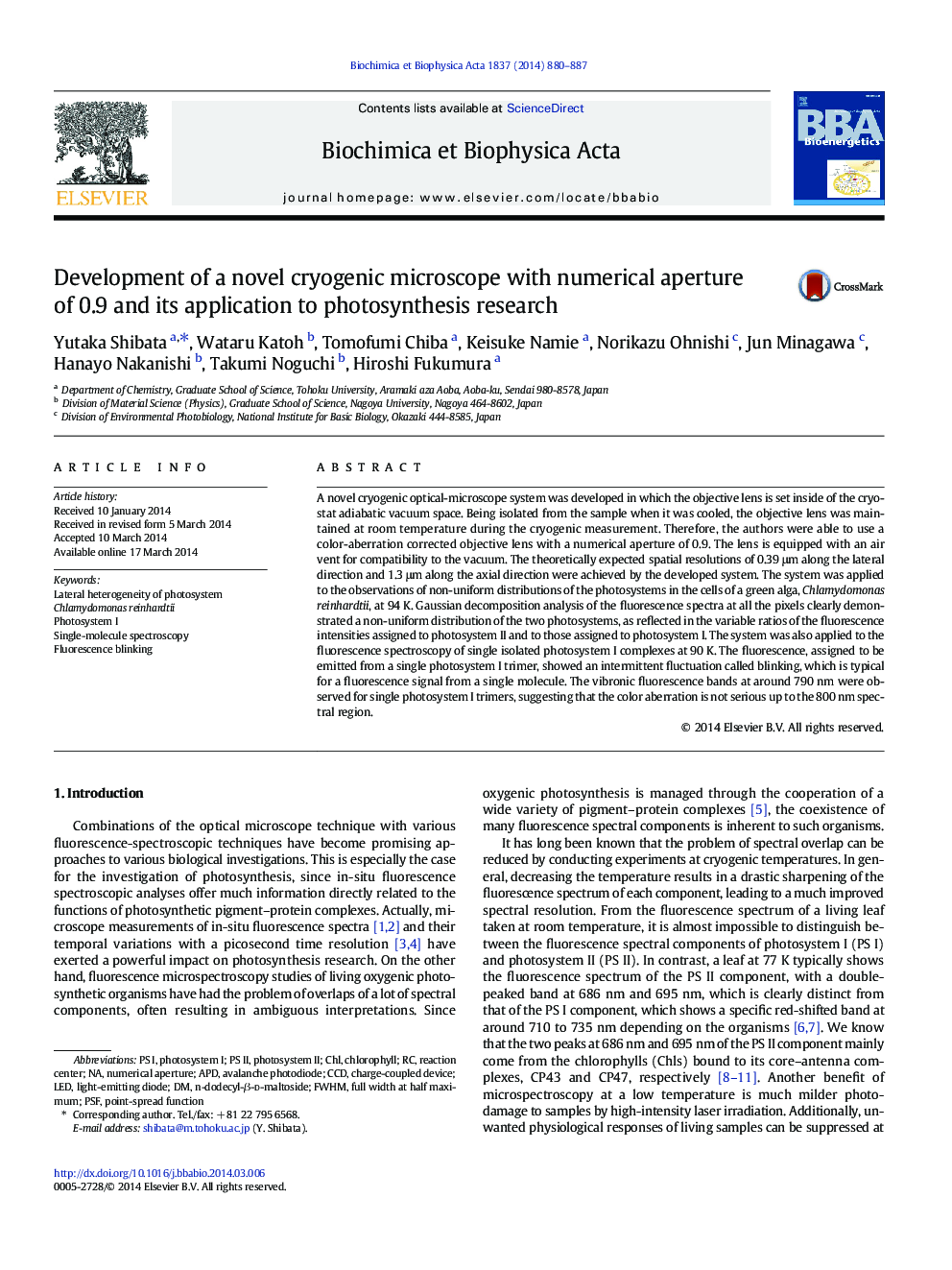| Article ID | Journal | Published Year | Pages | File Type |
|---|---|---|---|---|
| 10795710 | Biochimica et Biophysica Acta (BBA) - Bioenergetics | 2014 | 8 Pages |
Abstract
A novel cryogenic optical-microscope system was developed in which the objective lens is set inside of the cryostat adiabatic vacuum space. Being isolated from the sample when it was cooled, the objective lens was maintained at room temperature during the cryogenic measurement. Therefore, the authors were able to use a color-aberration corrected objective lens with a numerical aperture of 0.9. The lens is equipped with an air vent for compatibility to the vacuum. The theoretically expected spatial resolutions of 0.39 μm along the lateral direction and 1.3 μm along the axial direction were achieved by the developed system. The system was applied to the observations of non-uniform distributions of the photosystems in the cells of a green alga, Chlamydomonas reinhardtii, at 94 K. Gaussian decomposition analysis of the fluorescence spectra at all the pixels clearly demonstrated a non-uniform distribution of the two photosystems, as reflected in the variable ratios of the fluorescence intensities assigned to photosystem II and to those assigned to photosystem I. The system was also applied to the fluorescence spectroscopy of single isolated photosystem I complexes at 90 K. The fluorescence, assigned to be emitted from a single photosystem I trimer, showed an intermittent fluctuation called blinking, which is typical for a fluorescence signal from a single molecule. The vibronic fluorescence bands at around 790 nm were observed for single photosystem I trimers, suggesting that the color aberration is not serious up to the 800 nm spectral region.
Keywords
Related Topics
Life Sciences
Agricultural and Biological Sciences
Plant Science
Authors
Yutaka Shibata, Wataru Katoh, Tomofumi Chiba, Keisuke Namie, Norikazu Ohnishi, Jun Minagawa, Hanayo Nakanishi, Takumi Noguchi, Hiroshi Fukumura,
